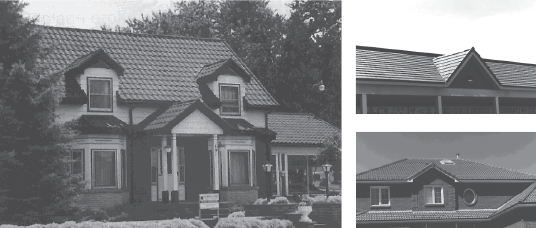There are a wide variety of metal roof systems that are available. Some metal panel systems are shop-fabricated; others are field-fabricated by the roofing contractor, while others are formed by manufacturers that market their metal roofing products to contractors around the country. As with all roof systems, there is no one system that is best for all applications. When choosing a metal panel roof system, it is important to determine if the roof will be steep or low-slope, and whether solid decking will be used to support the panels or will panels be required to span from one structural member to the next. You must carefully consider the climatic conditions to which the metal panels will be exposed, the occupancy and interior conditions so that moisture control and ventilation needs can be properly dealt with. In addition, some systems have a more limited life span than others and some systems also require greatly varying degrees of maintenance as they age.

Metal roofing systems are fabricated either at manufacturing facilities, or at the roofing contractor’s own sheet metal facility or the job site. Pre-manufactured structural panel systems dominate the commercial market, while contractors have produced a greater share of the architectural metal panel roof systems. Generally, metal roof panels are produced by using coiled metal stock and roll forming equipment. Another method of forming metal panels is to use a bending brake to form panels from cut sheet metal flat stock. A bending brake can be a mechanical hand brake, stationary press brake or a computer-controlled brake. With brake-formed panels, panel lengths are limited to 2, 3, or 4 m (6.5, or 9.8,13 ft), depending upon the length of the brake’s work deck and bending leaves.
Metal roofing systems are traditionally divided into two architectural and structural metal panels. The architectural metal system is similar to the traditional steep-slope shingle roof, in that it is considered to be a water-shedding roof system rather than a water barrier roof system.
Architectural metal roof systems are designed to shed water rapidly over the surface of the panels, so the seams do not have to be watertight. In order for the panel to shed water rapidly, the roof must have an adequate slope. Many architectural panel systems perform well on a slope of at least 3:12 (25%). Architectural metal panel roofs require solid substrate. An asphalt-saturated felt underlayment and a separate slip sheet, or an approved underlayment with slip sheet capabilities, are recommended. Architectural roof panels usually have a flat pan with stiffening ribs with one higher rib on each side.
